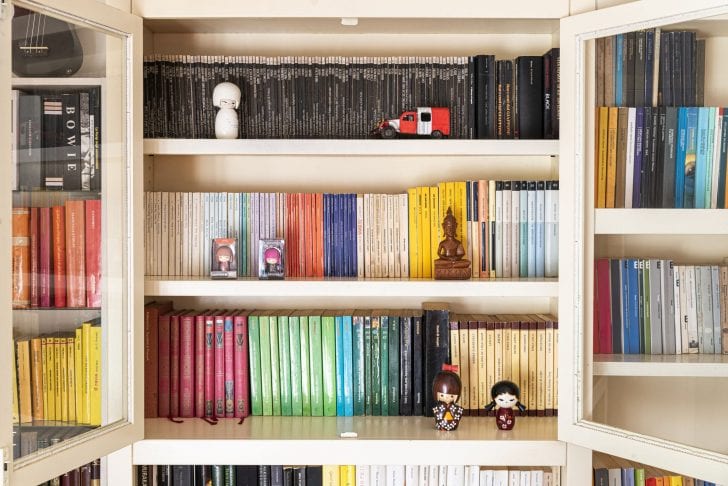If you’ve browsed through your social media feed lately, then you’ve probably noticed that more and more of your friends are posting photos of their organized bedroom or properly folded shirts according to color, this is probably the influence of a Netflix show called “Tidying Up with Marie Kondo.” The show, specifically the spectacular woman in the middle of the series, is taking over the audience right now – she inspired us to declutter our house and our life as well.
The Japanese tidying expert made organizing look so easy by showing us how to get the job done. Surprisingly, decluttering and bringing order to the house is so satisfying that many people are trying to follow suit to Kondo by heeding her advice. She has simple yet effective suggestions, which can fool you into thinking that tidying up is indeed a feasible task. Here we list some hacks on how you can organize your home, which will probably receive a nod from THE one and only, Ms. Kondo:
Book Arrangement

Oprahmag | Try arranging your books by color, which can make organizing fun
One of the worst nightmares of bookworms is having to deal with the pile of books sitting there at the corner. If you’re not as rich as Bill Gates and you don’t have a wide, beautiful library at your house, then your beloved treasures are probably by a small nook in your room. Try organizing them by color and not the usual by genre or in alphabetical order because it will be easier for you to note where you got the book from.
Bringing back the book will be a breeze because you basically just need to find the color scheme it belongs to. As the tidying goddess underlined, it is highly important that things have to have a designated spot that they should return to. What’s more, it will be aesthetically pleasing and this could be an eye-catcher to anyone who visits your room.
Reinvent Your Closet
Closets can be one of the messiest parts of a room, especially during winter because this is the time when thick sweaters and coats make the small area filled to the brim. In other times, meanwhile, we tend to just throw clothes into our closet, pretty much like we’re dumping garbage onto the bin.
However, as Kondo said in her book, it is essential that we transform this space into something that can make you happy once you visit it. Of course, this involves repainting it to your favorite color, putting divisions to the levels, and even folding the clothes the proper way – or perhaps, you can do the “KonMari” way, especially if you have many things you can’t let go.
The golden rule from the show which you can follow for practicality is to ask whether something still sparks joy. So for your closet, choose which ones are still valuable for you and discard other unnecessary things. You may be surprised to find out just how many things aren’t actually needed anymore.
Start Journaling

Deposit Photos | If you need a constant reminder of your organizational goals and ideals, practice bullet journaling
As per Kondo, you need to imagine what you want the outcome of the space to be, and if you are a visual person, the best thing to do is to write it down. Sometimes, you are more motivated to reach the goal when you see or read it – this is because you are constantly reminded of your ideals and goals, which will, in turn, motivate you to stick with them. So try making a bullet journal, this way you’re not just jotting down the organizational ideas that pop to your head, but you’ll also express your creativity along the way.
Use Transparent Containers and Label Them

JYSK | To avoid buying duplicates of the things you have, use transparent boxes for storage
If you use closed boxes to store away different items on the shelf, it is best that you use transparent containers instead so you can easily identify what’s inside. As Kondo pointed out, this will prevent you from buying the same stuff just because you forgot you have one or where you put it.
This hack is also helpful in the kitchen, specifically in the spice cabinet. If you don’t have a rack, chances are, the jars or bottles would look disorganized in one shelf. Moreover, you have to read the labels just so you’ll know which one you’re looking for. You can use transparent small mason jars and place chalkboard sticker where you can write what type of spice it contains. Neatly organize this in a rack, which will make it easier for you to use.













